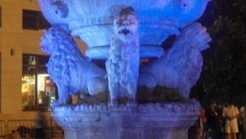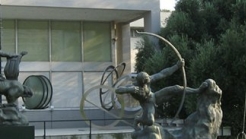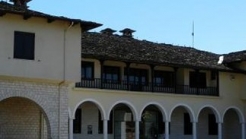

Greece
The exhibits cover the 2ND millennium B.C. on the island of Crete. The report presents 3000 exhibits from all over the island of Crete and the ethnic taxonomic status of social work human.
The Museum Cretan Ethnology (SVC) consists of an exhibition complex and from a research and Conference Center in a separate building, where all the other functions of the museum: research, training, conferences, Library, drawing board, Audio Labs, photography, maintenance, workshops, File and stores.
The exhibits cover the 2ND millennium B.C. on the island of Crete. The report presents 3000 exhibits from all over the island of Crete and the ethnic taxonomic status of social work human.
The museological methodology of the report is that of G. H. Riviere,Musee National des Arts et Traditions Populaires(ATP), in Paris. The report has received the 1992 special praise in the context of the award of the European Museum of the year (ΕΜΥΑ) from the European Museum Forum and the Council of Europe.
The report concerns the traditional life of Cretans, to protect the 2ND A.D. millennium.
1. Food: from the harvest and the crop in consumption, absolute priority for survival.
2. Architecture: the family shelter, public buildings.
3. Textile: Investment home and garment.
4. Arts – Trade: handicrafts, transformation of natural resources into utensils and tools. The overproduction creates the transaction and trade.
5. Transport: Movement of Man for commercial, etc. reasons, transportation, communications.
6. Customs and traditions: symbolic collective functions.
7. Social organization: popular culture in a society oral tradition.


Recently renovated mansion of Aktarika downtown and going to house the Vikelaia Library of Heraklion, a cultural institution with a great history which has justly been called "Academy of Sciences", as in previous years produced sufficient spiritual project in Humanities and the Arts .


The National Gallery has in its collections more than 17.000 works of painting, sculpture, engravings and other forms of art, and is the treasury of the recent Greek artistic creativity, covering a timespan from the metabyzantine days up to our days.


The Byzantine museum is located northeast of the Acropolis (Its-Kaleh) of the castle of Ioannina. It is a two storey building, on the ground floor of which the main exhibition is housed, comprising of findings (sculptures, coins, ceramics, pictures, bema doors, gospels) from the 4th to the 19th century.
1039 Ε 6061 01515 00